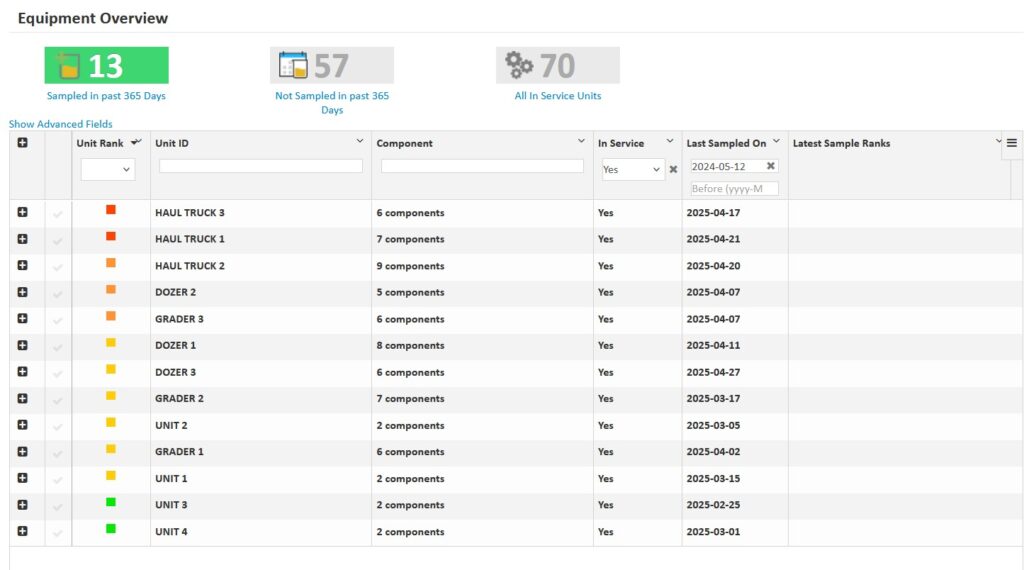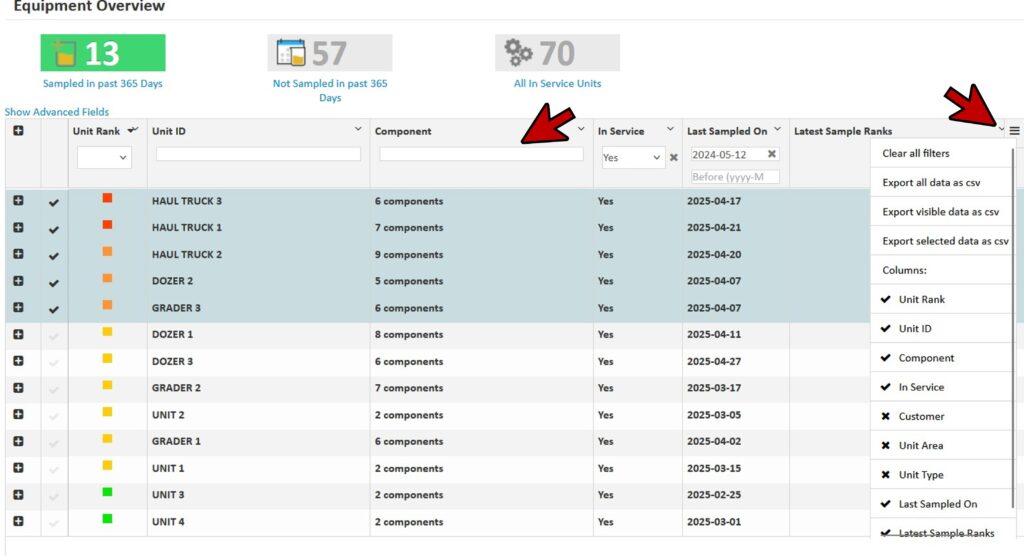-
myLab
-
Services
-
- Acid Number
- Analytical Ferrography
- Base Number: ASTM D2896 vs. D4739
- Crackle Test: Monitoring Water in Used Oil
- Demulsibility
- FTIR Direct Trend Methodology
- Fuel Distillation (ASTM D86)
- ISO Particle Count
- Karl Fischer Water Titration
- Optical Particle Classification (OPC)
- Remaining Useful Life Evaluation Routine (RULER)
- SEM-EDS Wear Debris Analysis
- Total Magnetic Iron (TMI)
- Varnish Potential
-
-
Sampling
-
- Coolant Sampling Procedures
- Grease Sampling Procedures
- Oil Sampling Basics (Short Course)
- Oil Sampling Procedures (Video)
- Oil Sampling Procedures: Good-Better-Best (PDF)
- Sample Collection Basics
- Sampling Oil Using a Drain Plug
- Sampling Oil Using a Pushbutton or KST-Series Valve
- Sampling Oil Using a Sample Pump
- Sampling Oil Using Thread-On Probe Style Valves
- Used Oil Filter Sampling
- Sampling from Filter Carts
-
-
Data Interpretation
-
- Analytical Ferrography Reporting
- Basic Testing Interpretation (PDF)
- Common Wear Mechanisms (PDF)
- DEF Specifications: ISO 22241
- Oil Cleanliness: ISO vs. NAS
- Potential Source of Spectrometry Metals (PDF)
- Reading the OA Report (PDF)
- Understanding ISO Particle Counts (PDF)
- Wear Metal Origins (PDF)
- Comparison: Wear Debris Analysis Technologies
- DEF Testing: Data interpretation
- Why Diesel Fuel Dilution is Bad for Your Engine
-
- Data Interpretation Process (Video)
- Data Interpretation: Compressors (Video)
- Data Interpretation: Diesel Engines (Video)
- Data Interpretation: Grease Analysis for Wind Turbines (VIDEO)
- Data Interpretation: Hydraulics (Video)
- Data Interpretation: Natural Gas Engines (Video)
- Data Interpretation: Oil Analysis for Wind Turbines (Video)
- Data Interpretation: Reducers (Video)
- Data Interpretation: Turbines (Video)
-
-
Whitepapers
-
Success Stories
-
FAQ
-
Release Notes
< All Topics
Print
Equipment Overview
PostedMay 12, 2025
UpdatedMay 14, 2025
ByFluid Life
The Equipment Overview page provides a view of the latest health status of all your units and components.
Accessing Equipment Overview
To access this information, you can:
- Click on the “In-Service Units Sampled” chart on the homepage.

- Select from the left menu: Register Samples >> Register Samples >> Equipment Overview (at bottom of menu).

This page is only accessible for those who have permission to register samples.
Using Equipment Overview
- Units are ranked so you can tell which units need attention first. This helps you to pinpoint where issues are occurring and the last sample dates for the unit.

- By clicking the plus icon in the first column, you can open the Unit information to show all the associated components, the last sample date, and the last three sample ranks for each component.

- If you have permission, you can setup samples from this grid and mark units and/or components in and out of service as well.

- You can also adjust the view on this page by using the various filters available at the top of each column and the various export functions found in the drop down menu at the top right of the chart. You can also adjust which chart columns you want to view in the drop down menu.

Tags:
Table of Contents
